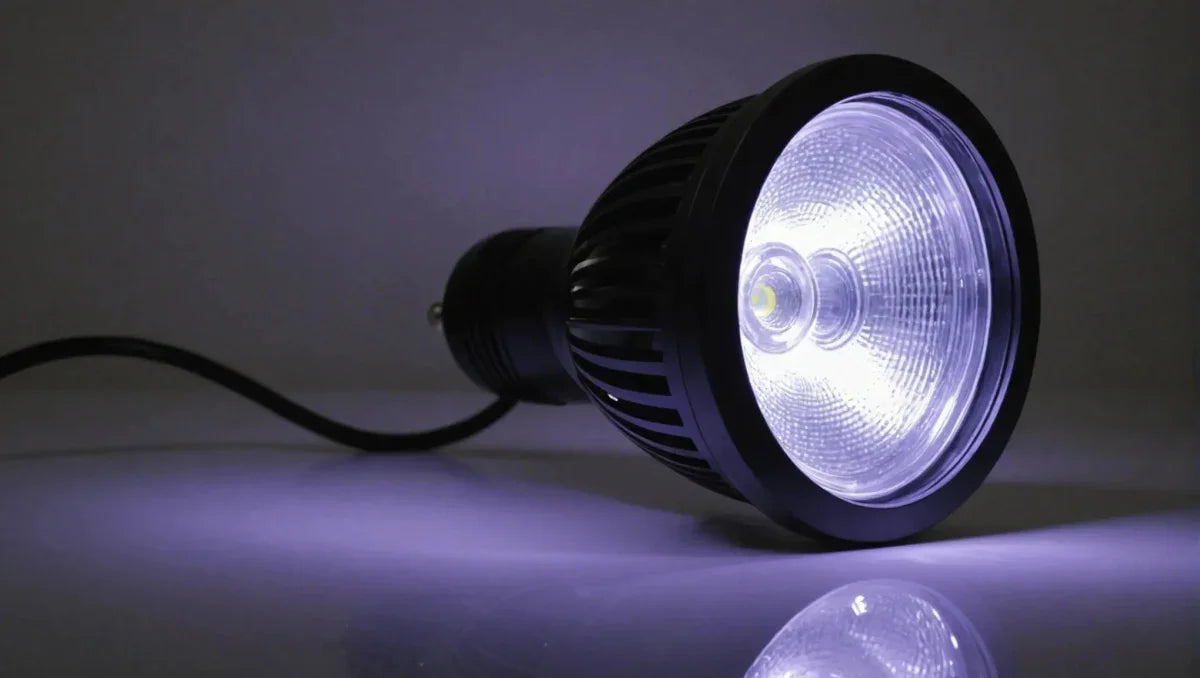Welcome to the ultimate guide on UVB LED lights!

In this comprehensive overview, we delve into the fascinating world of UVB LED lights, exploring their uses, benefits, and applications. UVB LEDs have revolutionized various industries, from skincare to medical devices, offering a more energy-efficient and versatile alternative to traditional UVB light sources.
We will uncover the science behind UVB light, how UVB LEDs work, and their advantages over conventional lighting technologies. Additionally, we will discuss the different types of UVB LEDs available, their features, and factors to consider when choosing the right UVB LED light for your specific needs. Whether you are a professional in the field or simply curious about this innovative technology, this guide will provide you with valuable insights and practical information to help you understand and harness the power of UVB LED lights effectively.
Benefits of UVB LED Lights
UVB LED Lights in Skin Care
- Enhancing skin health and appearance
- Managing specific skin conditions effectively
- Promoting collagen production for anti-aging benefits
- Boosting skin's natural defenses
- Improving skin texture and tone
Medical Applications of UVB LED Lights
- Phototherapy for various skin conditions such as vitiligo, psoriasis, and eczema
- Accelerating wound healing processes
- Facilitating the synthesis of essential Vitamin D in the body
- Managing inflammatory skin disorders
- Treating acne and reducing acne scarring
UVB LED lights have gained significant recognition for their versatile applications in both skincare and medical fields. In skincare, these lights play a crucial role in improving skin health by addressing specific concerns and enhancing overall skin appearance. The targeted nature of UVB LED therapy makes it a preferred choice for individuals looking to combat signs of aging, including fine lines, wrinkles, and loss of elasticity.
Moreover, the stimulation of collagen production by UVB LED lights not only aids in anti-aging benefits but also helps in improving skin texture and tone, resulting in a more youthful and radiant complexion. The ability of UVB LED lights to strengthen the skin's natural defenses further contributes to its effectiveness in skincare routines, providing a shield against environmental aggressors and UV damage.
In the medical realm, UVB LED lights are widely used in phototherapy to treat various skin conditions such as vitiligo, psoriasis, and eczema. The targeted UVB exposure helps in reducing inflammation, controlling cell proliferation, and promoting skin healing, making it an invaluable tool in managing chronic skin disorders.
Additionally, the wound healing properties of UVB LED lights are pivotal in clinical settings, where rapid healing is essential for post-operative care and chronic wound management. By accelerating the skin's regenerative processes, UVB therapy can minimize scarring, reduce infection risk, and improve overall wound closure rates.
Furthermore, UVB LED lights aid in the synthesis of Vitamin D, a vital nutrient that plays a crucial role in bone health, immune function, and overall well-being. Especially in regions with limited sunlight exposure, UVB therapy can help individuals maintain optimal Vitamin D levels, supporting their overall health.
The benefits of UVB LED lights go beyond traditional lighting applications, offering targeted solutions for a range of skin concerns in both cosmetic and medical settings. With ongoing research and advancements in technology, UVB LED therapy continues to pave the way for innovative skincare treatments and effective medical interventions, highlighting its promising future in enhancing skin health and overall well-being.
Choosing the Right UVB LED Lights
Factors to Consider
When choosing UVB LED lights, it is essential to consider various factors to ensure optimal performance and suitability for your specific requirements:.
-
Wavelength Range: The wavelength range of UVB LED lights plays a crucial role in their effectiveness for different applications. Select lights with wavelengths that align with your intended use, whether it's for medical treatment, sterilization, or industrial processes.
-
Intensity and Power Output: The intensity and power output of UVB LED lights impact their functionality. Higher intensity may be required for certain applications like curing adhesives, while lower intensity may suffice for skin therapy. Matching the intensity to the task is vital for achieving desired results.
-
Durability and Lifespan: Opt for UVB LED lights that are not only high-performing but also durable with a long lifespan. This ensures consistent performance over time, reduces maintenance costs, and minimizes disruptions in operations.
-
Energy Efficiency: Consider the energy efficiency of UVB LED lights to lower operational costs and minimize environmental impact. Energy-efficient lights not only save money but also contribute to sustainability efforts.
Best Practices for Selection
To make an informed decision when selecting UVB LED lights, follow these best practices:.
-
In-Depth Research: Conduct thorough research on available UVB LED lights to compare features, specifications, and customer feedback. Look for reputable brands known for quality and reliability.
-
Consultation with Experts: If you are uncertain about which UVB LED lights to choose, seek advice from professionals or experts in the field. Their expertise can help you navigate the technical aspects and narrow down the options.
-
Assess Your Needs: Evaluate your specific requirements, including the environment where the lights will be used, intended applications, and any regulatory standards to comply with. Customizing your selection based on these factors ensures optimal performance.
-
Trial and Evaluation: Whenever feasible, test the UVB LED lights or request samples to assess their performance firsthand. This hands-on approach allows you to validate the lights' effectiveness and compatibility with your intended usage before making a purchase decision.
-
Consider Long-Term Benefits: Look beyond the initial cost and consider the long-term benefits of investing in quality UVB LED lights. Factor in aspects like warranty, technical support, and potential upgrades to maximize the value of your purchase.
By carefully evaluating these factors and following best practices, you can confidently choose the right UVB LED lights that meet your specific needs and deliver reliable performance over time.
Safety Precautions when Using UVB LED Lights
Protective Measures:
-
Eye Protection: Always wear protective goggles when using UVB LED lights to prevent eye damage.
-
Skin Protection: Use protective clothing to cover exposed skin to avoid UV radiation exposure. Clothing should have a UPF (Ultraviolet Protection Factor) rating for better protection.
-
Distance: Maintain a safe distance from the UVB LED lights to reduce direct exposure. A distance of at least 12 inches is recommended for most UVB LED devices.
-
Proper Ventilation: Ensure the area is well-ventilated to prevent the accumulation of ozone, which can be produced by certain UVB LED lights. Ozone exposure can lead to respiratory issues.
-
Time Limit: Limit exposure time to UVB LED lights to reduce any potential harm. Start with short sessions and gradually increase exposure time as needed, following professional recommendations.
Avoiding Risks:
-
Quality Equipment: Use high-quality UVB LED lights from reputable manufacturers to ensure safety. Check for certifications and quality standards compliance.
-
Follow Instructions: Adhere to the manufacturer's guidelines for using UVB LED lights properly. This includes information on usage duration, distance, and safety precautions.
-
Monitor Usage: Keep track of the duration and frequency of UVB LED light usage to prevent overexposure. Consider using a timer or log to record each session for reference.
-
Regular Maintenance: Ensure the UVB LED lights are regularly checked and maintained to prevent malfunctions. Inspect the bulbs, casing, and power source periodically.
Importance of Professional Consultation:
While UVB LED lights can offer therapeutic benefits, it is crucial to consult a healthcare professional or dermatologist before starting any UVB light therapy. They can provide personalized recommendations based on your skin type, medical history, and treatment goals.
Safety for Specific Groups:
-
Pregnant Women: Pregnant women should consult their healthcare provider before using UVB LED lights to ensure safety for both the mother and the baby.
-
Children: Extra caution should be taken when using UVB LED lights on children. Consult a pediatrician for guidance on safe usage for children.
By following these comprehensive safety precautions, seeking professional advice, and considering specific needs for different groups, you can harness the benefits of UVB LED lights effectively and safely.
Future Trends in UVB LED Technology
Innovations and Developments
- Advancements in UVB LED technology, such as increased efficiency and durability, are driving innovations in various industries.
- Development of UVB LEDs with tailored wavelengths for specific applications, expanding the possibilities for their use.
- Integration of UVB LEDs into wearable devices and smart technology for personalized healthcare solutions.
- Research focus on enhancing the lifespan of UVB LEDs to make them more cost-effective and sustainable.
- Exploration of new materials and manufacturing techniques to further improve the performance of UVB LEDs.
- Application of UVB LEDs in disinfection and sanitization processes due to their ability to inactivate pathogens effectively.
- Use of UVB LEDs in food processing and packaging to extend shelf life and ensure food safety.
- Integration of UVB LEDs in environmental monitoring systems to detect and neutralize pollutants in real-time.
- Emerging trend of using UVB LEDs in the agricultural sector for pest control and disease management in crops.
- Potential applications of UVB LEDs in the aerospace industry for disinfecting cabin surfaces and enhancing air quality.
- Adoption of UVB LEDs in the entertainment sector for special effects and immersive lighting experiences.
- Increasing research on the use of UVB LEDs in waterless sanitation solutions for remote or water-scarce areas.
- Collaboration between academia and industry to explore the use of UVB LEDs in advanced medical imaging technologies.
- Incorporation of UVB LEDs in wearable UV monitoring devices for tracking personal exposure levels and promoting sun-safe behaviors.
Potential Applications
- UVB LEDs are increasingly being used in advanced medical treatments, such as targeted phototherapy for skin disorders and wound healing.
- Integration of UVB LEDs in autonomous vehicles for enhanced disinfection and air quality management within the vehicle interior.
- Use of UVB LEDs in next-generation semiconductor manufacturing processes for precise lithography and patterning.
- Exploration of UVB LEDs in space exploration missions for sterilization and contamination control in spacecraft environments.
- Adoption of UVB LEDs in the fashion industry for UV-responsive clothing and accessories that change color in sunlight.
- Research on utilizing UVB LEDs in art restoration and conservation to treat delicate surfaces with minimal heat damage.
- Incorporation of UVB LEDs in energy-efficient lighting systems for indoor agriculture and vertical farming applications.
- Potential integration of UVB LEDs in consumer electronics for personal care devices and home sterilization products.
- Application of UVB LEDs in non-invasive medical procedures for targeted therapies and diagnostics with minimal side effects.
- Collaboration between regulatory bodies and UVB LED manufacturers to establish industry standards for product quality and safety.
- Ongoing advancements in UVB LED technology to address global challenges in healthcare, sustainability, and environmental protection.
- Continuous innovation in the design and production of UVB LEDs to meet the diverse needs of evolving industries and ensure a brighter, cleaner future.
Conclusion
UVB LED lights offer a revolutionary solution for various applications, ranging from skincare to industrial processes. Their energy efficiency, compact size, and targeted wavelength make them a versatile choice for both personal and commercial use. As the technology continues to advance, we can expect UVB LED lights to become even more accessible and beneficial in the near future. Whether you are looking to enhance your beauty routine or improve production processes, UVB LED lights are indeed the ultimate lighting solution to consider.






